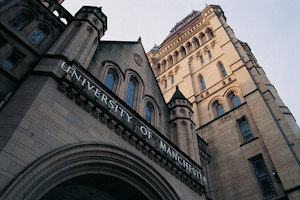Unilever partnership graduates to next level
25 Mar 2015
Unilever R&D wraps up a successful year of ground-breaking science discoveries with partner, The University of Manchester

It’s only been a year since Unilever made its scientific partnership with the University official, and already the collaboration is bearing fruit.
The partnership agreement, signed in late 2013, forms part of Unilever R&D’s strategy to build a science grid and covers a diverse range of fields, including chemical engineering, toxicology, inflammation and leading edge biosciences.
To date, most of the University’s work has been with Unilever’s Strategic Science group, however VP Open Innovation, Jon Hague, says the team is now seeing the breadth of projects expand across the full spectrum of R&D and is planning for more widespread opportunities in 2015. Among the partnership’s successes to date is the establishment of four public-industry funded projects worth more than £3 million. One such project to improve manufacturing processes will allow Unilever to reduce water and energy usage and the freeing up of the process plant for production. Initially evaluated for Personal Care, there now are plans to assess the application to Foods and Refreshment and the team is actively exploring deployment at a manufacturing site.
Unilever R&D is also advancing its understanding of hair and follicle biology through the partnership and is using this knowledge to deliver new insights and technology options for our next generation of hair care products.
Unilever SEAC (Safety and Environmental Assurance) scientists have also collaborated with the University to understand the biological mechanisms underpinning skin allergies, with a view to applying this understanding to consumer safety risk assessments. We are working with The University to characterise the adverse immune response in allergic contact dermatitis patients and from this mathematically model the data. The University has been key to the success of this network, analysing blood samples from over 100 patients diagnosed with a skin allergy.
These initiatives are just a snippet of the exciting research conducted over the past 12 months and the future looks even brighter with news that the UK will create a £235 million Sir Henry Royce Institute for Advanced Materials based at The University of Manchester, complemented by satellite centres at Leeds, Liverpool and Sheffield Cambridge Oxford and Imperial College.
“We are looking forward to some really big opportunities with Manchester in 2015 and will come back with more stories and updates during the year” says Jon.
Professor Luke Georghiou, Vice President, Research and Innovation at The University of Manchester, said: “We are delighted to have the broadest collaboration with Unilever of any University and work with them on real world problems. We can see the impact of our research and expertise and look forward to the new research challenges offered by Unilever.”
